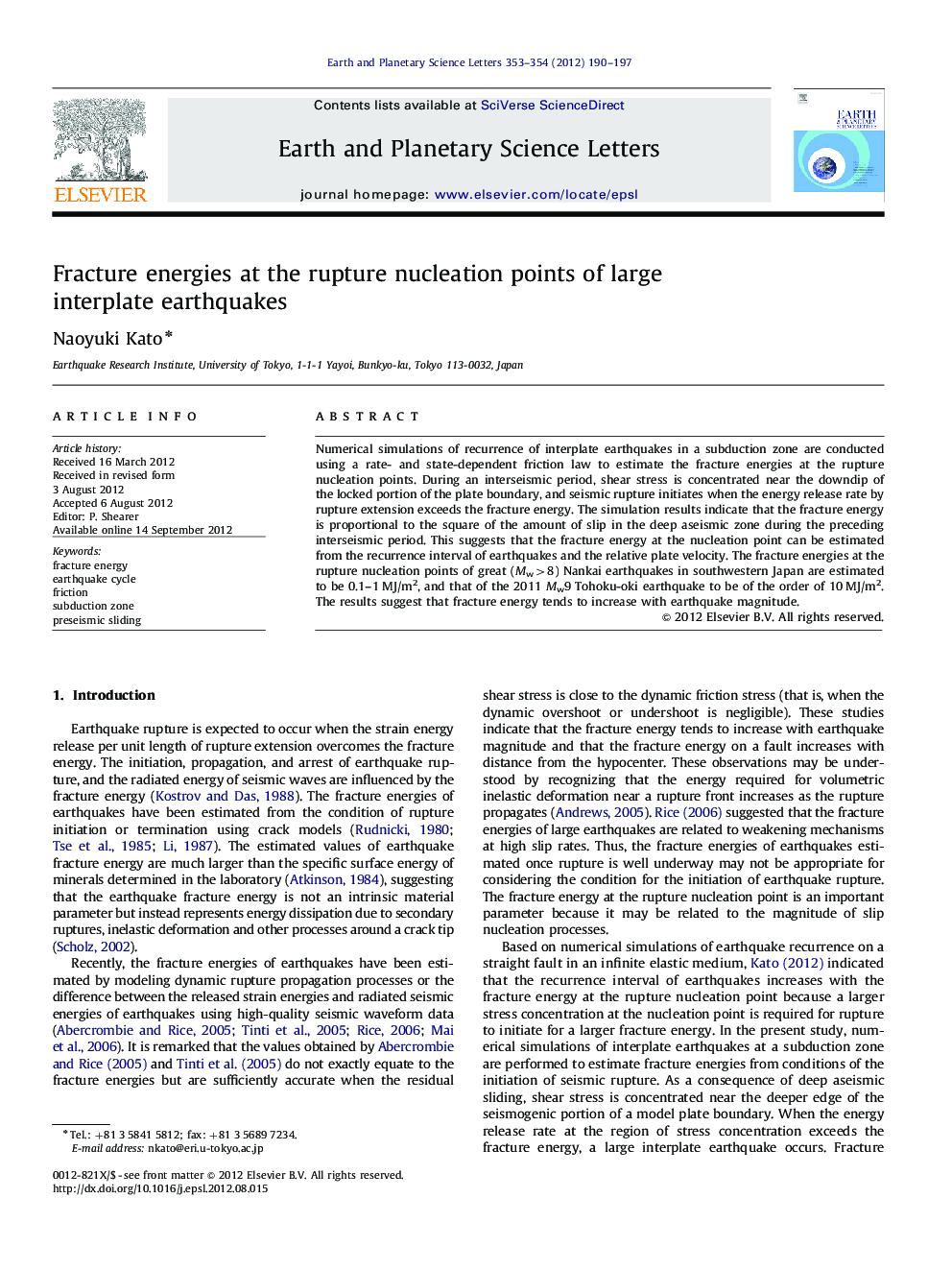| Article ID | Journal | Published Year | Pages | File Type |
|---|---|---|---|---|
| 6430496 | Earth and Planetary Science Letters | 2012 | 8 Pages |
Numerical simulations of recurrence of interplate earthquakes in a subduction zone are conducted using a rate- and state-dependent friction law to estimate the fracture energies at the rupture nucleation points. During an interseismic period, shear stress is concentrated near the downdip of the locked portion of the plate boundary, and seismic rupture initiates when the energy release rate by rupture extension exceeds the fracture energy. The simulation results indicate that the fracture energy is proportional to the square of the amount of slip in the deep aseismic zone during the preceding interseismic period. This suggests that the fracture energy at the nucleation point can be estimated from the recurrence interval of earthquakes and the relative plate velocity. The fracture energies at the rupture nucleation points of great (Mw>8) Nankai earthquakes in southwestern Japan are estimated to be 0.1-1Â MJ/m2, and that of the 2011 Mw9 Tohoku-oki earthquake to be of the order of 10Â MJ/m2. The results suggest that fracture energy tends to increase with earthquake magnitude.
⺠Fracture energies at the nucleation points of interplate earthquakes are estimated. ⺠Fracture energy at the nucleation point is smaller than for well developed rupture. ⺠Fracture energy is proportional to the square of slip amount at deep aseismic zone. ⺠Fracture energy tends to increase with earthquake magnitude.
